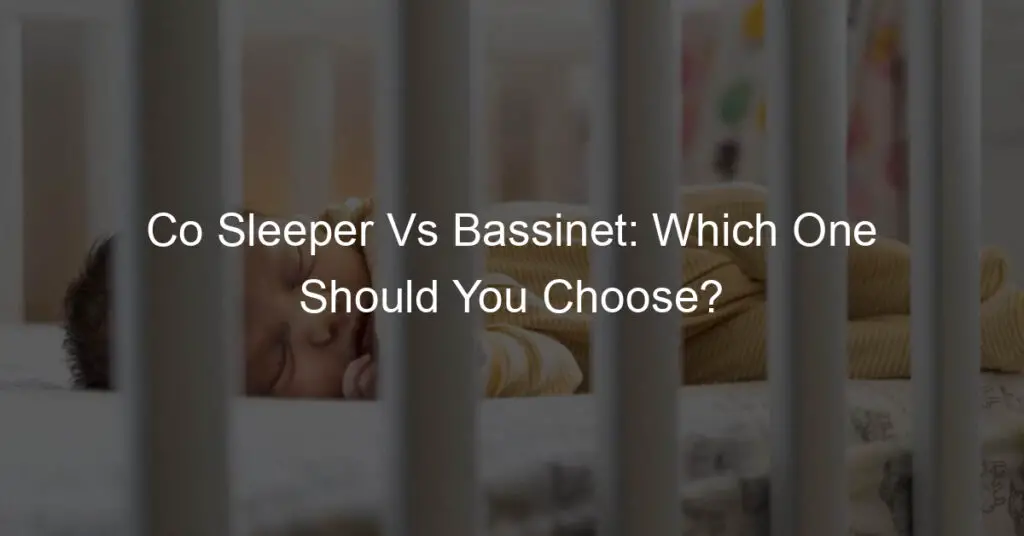Introduction
- When it comes to the well-being of our little ones, sleep plays a crucial role. It’s during these peaceful hours that babies grow and develop. This blog post will provide an overview of a popular sleep solution for babies – co-sleepers. Co-sleepers are designed to keep your baby close while providing them with their own safe and comfortable space to sleep. They come in various styles and sizes, each with its own set of benefits.
- Choosing the right sleep solution for your baby is not just about convenience, it’s about their safety and health. According to the American Academy of Pediatrics, safe sleep practices can significantly reduce the risk of Sudden Infant Death Syndrome (SIDS). Therefore, it’s essential to carefully consider the type of sleep solution you choose for your baby. This post will guide you through the process, providing you with the necessary information to make an informed decision.
Understanding Co-Sleepers

What is a Co-Sleeper?
- Definition and description of a Co-Sleeper: A co-sleeper is a small bed designed for infants that attaches to the parents’ bed. It allows parents to sleep close to their baby while ensuring the baby has its own safe space.
- Discussion on Co Sleeper benefits: Co-sleepers offer numerous benefits. They allow for easy nighttime feeding and comforting, promote bonding, and can help parents get more sleep.
- Examples of situations where Co-Sleepers are advantageous: Co-sleepers are especially beneficial for breastfeeding mothers, parents of newborns, or those with small bedrooms where a separate crib might not fit.
- Review and description of the best Co Sleeper options: Some of the best co-sleepers include the Arm’s Reach Concepts Clear-Vue Co-Sleeper and the Baby Delight Beside Me Dreamer Bassinet & Bedside Sleeper.
- Co Sleeper reviews and customer feedback: Most parents who use co-sleepers appreciate the convenience and closeness they provide. However, some note the need for careful assembly to ensure safety.
- Definition and description of a Bassinet: A bassinet is a small, portable bed for infants. Unlike co-sleepers, they are standalone units and do not attach to the parents’ bed.
- Discussion on Bassinet advantages: Bassinets are lightweight, portable, and take up less space than a crib. They are ideal for keeping the baby close during the first few months.
- Examples of situations where Bassinets are beneficial: Bassinets are beneficial for parents who need to move the baby’s sleeping area frequently or those who want to keep the baby in the same room but not necessarily in the same bed.
- Review and description of the best Bassinet options: Top bassinet options include the Halo Bassinest Swivel Sleeper and the Fisher-Price Soothing Motions Bassinet.
- Bassinet reviews and customer feedback: Many parents love the portability of bassinets, but some note that their babies outgrow them quickly.
- Comparative analysis of Co Sleeper vs Bassinet: While both co-sleepers and bassinets offer the advantage of keeping the baby close, co-sleepers allow for closer proximity and easier nighttime care, while bassinets offer more flexibility in placement.
- Key differences and similarities: Both co-sleepers and bassinets are designed for newborns and small infants. The main difference lies in their placement: co-sleepers attach to the parents’ bed, while bassinets are standalone units.
- Factors to consider when choosing between Co Sleeper and Bassinet: When choosing between a co-sleeper and a bassinet, consider your nighttime routine, bedroom space, and personal comfort preferences.
- Personalized advice based on different scenarios: If you’re a breastfeeding mother who wants easy access to your baby at night, a co-sleeper might be the best choice. If you prefer a separate but close sleeping arrangement, a bassinet could be a better fit.
- Importance of safety in baby sleep solutions: Regardless of your choice, safety should be your top priority. Ensure the product meets safety standards and always follow the manufacturer’s instructions for use.
- Tips for ensuring safe sleep for your baby: Always place your baby on their back to sleep, keep the sleep area clear of blankets and toys, and ensure the baby’s sleep area is firm and flat.
- Summary of key points: Both co-sleepers and bassinets have their advantages and can provide a safe, comfortable sleeping space for your baby. Your choice will depend on your personal needs and preferences.
- Final thoughts and recommendations: Ultimately, the best choice is the one that ensures your baby’s safety and fits your lifestyle. Always prioritize safety and comfort when choosing a sleep solution for your baby.














